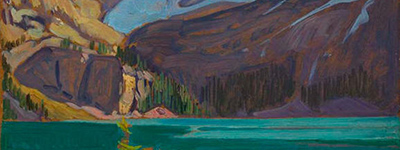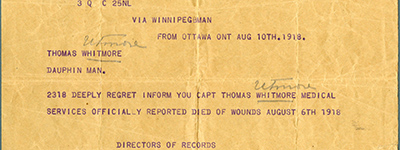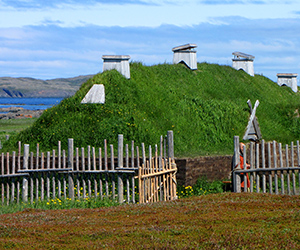CANADA HISTORY - Politics-Provinces
POLITICS - NUNAVUT
The history of Nunavut stretches back thousands of years, long before the creation of the modern territory in 1999. The land we now know as Nunavut was once home to the Paleo-Eskimo peoples, the earliest known inhabitants of the Arctic. These ancient hunters arrived around 4,000 years ago, migrating from what is now Siberia across the Bering Strait, and they were followed by the Dorset culture, whose mastery of Arctic survival is evidenced by the tools, carvings, and remnants of their settlements that dot the landscape. The Dorset people were later replaced by the Thule culture, the direct ancestors of the modern Inuit, around 1,000 years ago. The Thule brought with them innovations in hunting techniques, dog sledding, and the construction of the qajaq (kayak), allowing them to thrive in the harsh Arctic environment. The Inuit, whose ancestors settled in what is now Nunavut, developed a unique culture centered around the sea and its rich resources, relying on seals, whales, and caribou for sustenance, clothing, and tools. Their oral histories, intricate artwork, and strong sense of community bound them to the land and each other for generations.
European contact in the High Arctic came relatively late compared to other parts of Canada, but its impact was profound. Explorers such as Martin Frobisher, who arrived in the 1570s in search of the fabled Northwest Passage, were among the first Europeans to encounter the Inuit. Though Frobisher’s expeditions were marked by misunderstanding and conflict, they signaled the beginning of European interest in the region. The search for the Northwest Passage continued for centuries, with famed explorers like Sir John Franklin disappearing in the Arctic in the mid-19th century, only for their lost expedition to become the stuff of legend. It wasn’t until the 20th century that explorers like Roald Amundsen successfully navigated the treacherous waters of the Arctic, completing the passage that had eluded so many before him.
The arrival of Europeans brought dramatic changes to Inuit life, particularly through the fur trade and the spread of Christian missions. By the 19th century, the Hudson’s Bay Company had established trading posts in the Arctic, exchanging European goods for furs. While these posts brought new tools and resources to the Inuit, they also introduced new diseases and disrupted traditional ways of life. Christian missionaries, particularly the Anglicans and Roman Catholics, followed in the footsteps of traders, establishing missions and schools that sought to convert the Inuit and assimilate them into European ways of life. The introduction of residential schools in the 20th century would have devastating effects on Inuit families and communities, severing ties between generations and leading to the loss of language and culture.
By the mid-20th century, the Canadian government began to take a more active role in administering the Arctic. Inuit were increasingly drawn into the orbit of southern Canada, as government programs encouraged the establishment of permanent settlements. The creation of the Northwest Territories in 1870 had brought much of the Canadian Arctic under federal control, but the Inuit’s place in this political structure remained tenuous. In the 1950s and 1960s, the federal government relocated many Inuit families from their traditional lands into centralized settlements, often with tragic consequences. These relocations, intended to facilitate the delivery of services like health care and education, disrupted traditional hunting practices and left many Inuit families impoverished and alienated from their ancestral lands.
The political awakening of the Inuit in the late 20th century is one of the most significant chapters in the history of Nunavut. The move toward self-determination began with the recognition of Inuit land rights and cultural preservation. In the 1970s, Inuit leaders, frustrated with the lack of government attention to their needs and the ongoing encroachment on their lands, began organizing for political change. The Inuit Tapiriit Kanatami (ITK), originally formed as the Inuit Tapirisat of Canada, emerged as the voice of Inuit people across Canada, advocating for land claims and the protection of Inuit culture. Their efforts culminated in the negotiation of the Nunavut Land Claims Agreement, signed in 1993, which remains the largest Indigenous land claim settlement in Canadian history.
The Nunavut Land Claims Agreement was transformative. It granted the Inuit control over vast swaths of land, gave them subsurface mineral rights, and established provisions for the protection of their language and culture. It also laid the foundation for the creation of Nunavut, a new territory carved from the eastern portion of the Northwest Territories. On April 1, 1999, Nunavut officially came into being, with Iqaluit as its capital. The creation of Nunavut was more than just the redrawing of borders; it was the culmination of decades of struggle for self-determination, and it marked the beginning of a new chapter in Inuit governance. Nunavut’s unique form of government, which operates on a consensus model without political parties, reflects the Inuit tradition of collective decision-making.
The political landscape of Nunavut has been shaped by leaders who have navigated the challenges of balancing tradition with the demands of modern governance. Figures such as Paul Okalik, who became Nunavut’s first premier, played a pivotal role in establishing the territory’s government and laying the groundwork for its future development. Okalik’s leadership focused on building the infrastructure needed to support the new territory, improving health care, and expanding educational opportunities for the Inuit. The challenges faced by Nunavut’s leaders have been immense, as the territory grapples with issues such as housing shortages, high unemployment, and the effects of climate change on the Arctic environment.
Nunavut’s economy, historically based on subsistence hunting and fishing, has evolved over the past few decades. While traditional activities such as hunting, trapping, and fishing remain central to Inuit culture and livelihood, the territory has also seen growth in industries such as mining and tourism. The discovery of valuable minerals in Nunavut’s vast, resource-rich land has attracted mining companies, providing new economic opportunities for the territory. However, the development of these industries has sparked debates over environmental protection and the need to balance economic growth with the preservation of Inuit land and culture.
Climate change presents one of the most significant challenges facing Nunavut today. The Arctic is warming at a rate twice as fast as the rest of the world, and the impacts of climate change are already being felt across the territory. Melting sea ice, shifting migration patterns of animals, and changing weather conditions have disrupted traditional Inuit ways of life. The Inuit, who have lived in harmony with the Arctic environment for millennia, now find themselves on the front lines of a global environmental crisis. Inuit leaders and activists have become vocal advocates for climate action, drawing international attention to the urgent need to address the environmental threats facing the Arctic.
Despite these challenges, Nunavut remains a place of remarkable resilience and cultural strength. The Inuit language, Inuktitut, is an official language of the territory, and efforts to revitalize and promote Inuit culture are central to the territory’s identity. Traditional knowledge, passed down through generations, continues to inform modern Inuit life, from governance to environmental stewardship. The territory’s youth, increasingly educated and engaged in both Inuit and Western knowledge systems, are poised to lead Nunavut into the future, navigating the complex interplay of tradition and modernity.
The history of Nunavut is one of survival, adaptation, and self-determination. From the ancient Thule people who first settled its harsh landscapes to the modern Inuit who fought for political autonomy and cultural preservation, Nunavut’s story is deeply tied to the land and the people who have called it home for millennia. Its leaders, from early Inuit organizers to modern political figures like Paul Okalik, have forged a path forward for their people, ensuring that Nunavut remains not just a territory but a vibrant and enduring testament to the strength of Inuit culture and governance in the face of immense challenges. As Nunavut moves into the 21st century, its people continue to build on their rich history, shaping a future that honors both the past and the promise of a changing Arctic world.












